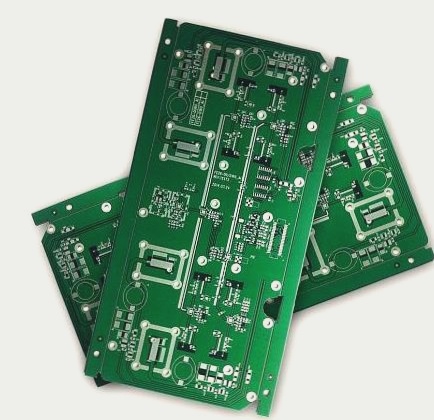1. The so-called lead-free soldering iron welding refers to the use of solder that does not contain Pb for welding fr4 PCB. Currently, the commonly used solder contains up to 40% Pb.
2. The key to achieving lead-free soldering is to find a lead-free tin that can replace the current solder. Lead solder has been used for centuries due to its excellent properties, low cost, and abundant reserves.
3. Over the past 20 years, the global electronic industry and related scientific and technological communities have dedicated significant manpower and resources to researching and developing lead-free solder. However, progress has been less than ideal due to the rigorous requirements of this new electronic material.
4. Presently, only the Sn-Ag-Cu alloy, which has relatively good properties, can serve as a temporary substitute for the Sn-Pb alloy.

Sn-Ag-Cu solder is the main type of lead-free solder currently used, with alloys typically being SAC305 (Sn-3.0Ag-0.5Cu) and SAC405 (Sn-4.0Ag-0.5Cu). However, compared to 63/37Sn-Pb solder, SAC305 and SAC405 have some major drawbacks:
1) High melting point (SAC at about 220 ℃, Sn-Pb at about 183 ℃).
2) Poor wettability (SAC wettability equivalent to about 70% of Sn-Pb).
The higher melting point of lead-free solder significantly reduces the process window, from 57~67 ℃ (A) for Sn-Pb solder to 23~33 ℃ (B). This poses challenges for the soldering process and can potentially affect the performance of the substrate and components due to over-temperature. In addition, the poor hole wettability of lead-free solder increases the difficulty of the soldering process. In order to address these challenges, the following countermeasures are commonly utilized:
1) Technical training for operators to understand the characteristics and requirements of lead-free soldering.
2) Use of electric soldering irons with PID temperature control to ensure stability and accuracy of temperature.
3) Selection of solder wire, preferably Sn-Ag-Cu solder wire with 1% Ag content, but not necessarily 3%~4%. The diameter of the solder wire can vary, and Sn-Ag-Cu-In-X solder wire can be used when necessary.
4) Practice of operation skills, including adding solder to the base metal for a certain preheating time and cautious attention during the operation.
Reflow soldering workflow:
Stage 1: The temperature must rise at a rate of about 3 ℃ per second to limit boiling and the drop of solvent in the tin. Rapid temperature rise can cause solvent boiling and metal powder splashing, affecting product performance. Some electronic components are sensitive to temperature and can burst if it rises too fast.
Stage 2: The flux is active and begins chemical cleaning action, destroying oxide on the material surface and promoting full contact between the component and the fr4 pcb pad.
Stage 3: The temperature continues to rise, causing solder particles to melt and initiate the “rush” process of liquefaction and surface tin absorption, forming solder joints.
Stage 4: This is a critical stage where individual solder particles combine to form liquid tin, and surface tension begins to form the solder leg surface, potentially causing open circuit if the gap between the component pin and the fr4 pcb pad exceeds 4mil.
2. The key to achieving lead-free soldering is to find a lead-free tin that can replace the current solder. Lead solder has been used for centuries due to its excellent properties, low cost, and abundant reserves.
3. Over the past 20 years, the global electronic industry and related scientific and technological communities have dedicated significant manpower and resources to researching and developing lead-free solder. However, progress has been less than ideal due to the rigorous requirements of this new electronic material.
4. Presently, only the Sn-Ag-Cu alloy, which has relatively good properties, can serve as a temporary substitute for the Sn-Pb alloy.

Sn-Ag-Cu solder is the main type of lead-free solder currently used, with alloys typically being SAC305 (Sn-3.0Ag-0.5Cu) and SAC405 (Sn-4.0Ag-0.5Cu). However, compared to 63/37Sn-Pb solder, SAC305 and SAC405 have some major drawbacks:
1) High melting point (SAC at about 220 ℃, Sn-Pb at about 183 ℃).
2) Poor wettability (SAC wettability equivalent to about 70% of Sn-Pb).
The higher melting point of lead-free solder significantly reduces the process window, from 57~67 ℃ (A) for Sn-Pb solder to 23~33 ℃ (B). This poses challenges for the soldering process and can potentially affect the performance of the substrate and components due to over-temperature. In addition, the poor hole wettability of lead-free solder increases the difficulty of the soldering process. In order to address these challenges, the following countermeasures are commonly utilized:
1) Technical training for operators to understand the characteristics and requirements of lead-free soldering.
2) Use of electric soldering irons with PID temperature control to ensure stability and accuracy of temperature.
3) Selection of solder wire, preferably Sn-Ag-Cu solder wire with 1% Ag content, but not necessarily 3%~4%. The diameter of the solder wire can vary, and Sn-Ag-Cu-In-X solder wire can be used when necessary.
4) Practice of operation skills, including adding solder to the base metal for a certain preheating time and cautious attention during the operation.
Reflow soldering workflow:
Stage 1: The temperature must rise at a rate of about 3 ℃ per second to limit boiling and the drop of solvent in the tin. Rapid temperature rise can cause solvent boiling and metal powder splashing, affecting product performance. Some electronic components are sensitive to temperature and can burst if it rises too fast.
Stage 2: The flux is active and begins chemical cleaning action, destroying oxide on the material surface and promoting full contact between the component and the fr4 pcb pad.
Stage 3: The temperature continues to rise, causing solder particles to melt and initiate the “rush” process of liquefaction and surface tin absorption, forming solder joints.
Stage 4: This is a critical stage where individual solder particles combine to form liquid tin, and surface tension begins to form the solder leg surface, potentially causing open circuit if the gap between the component pin and the fr4 pcb pad exceeds 4mil.



